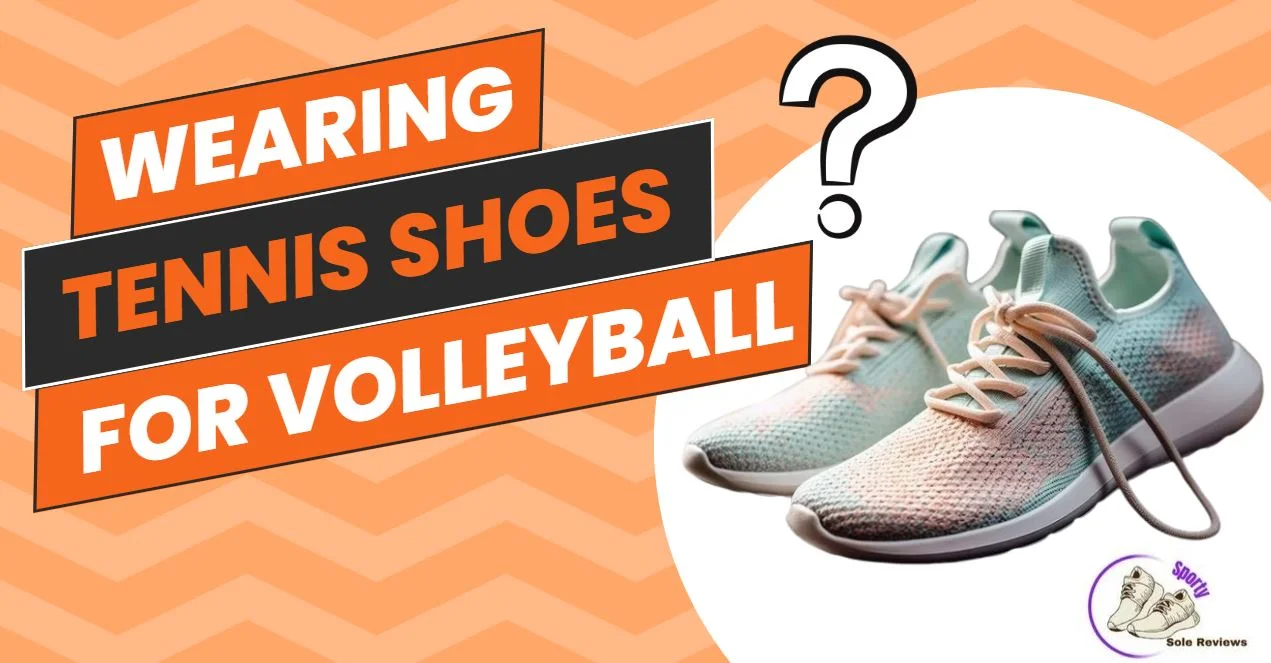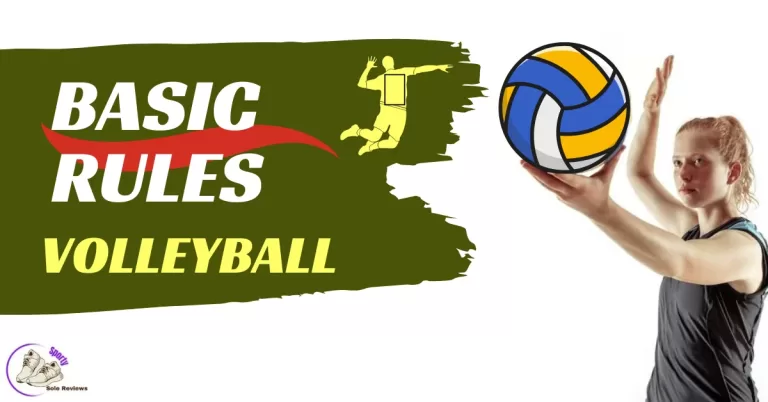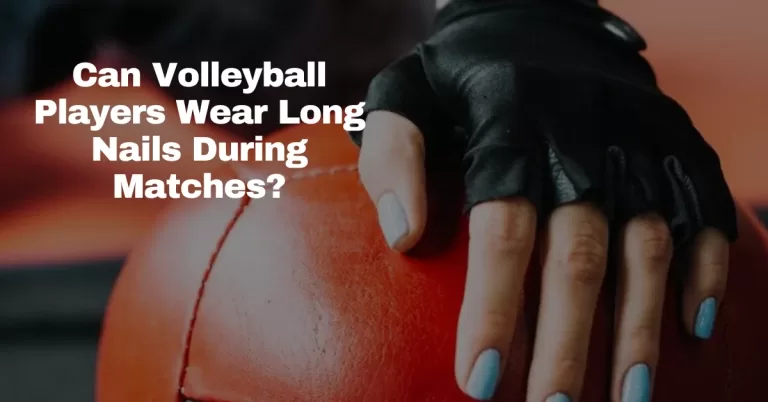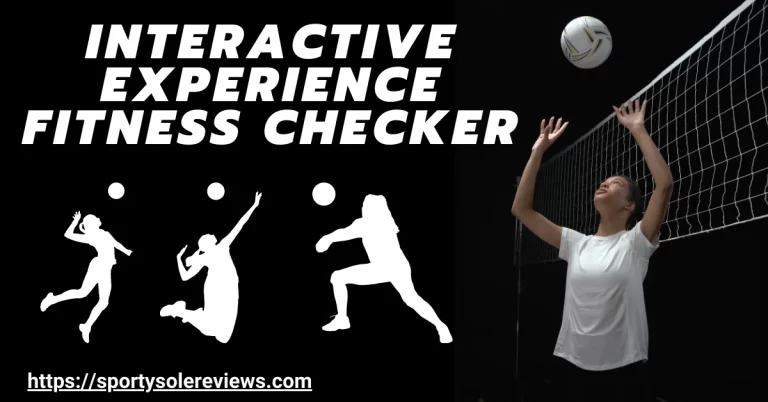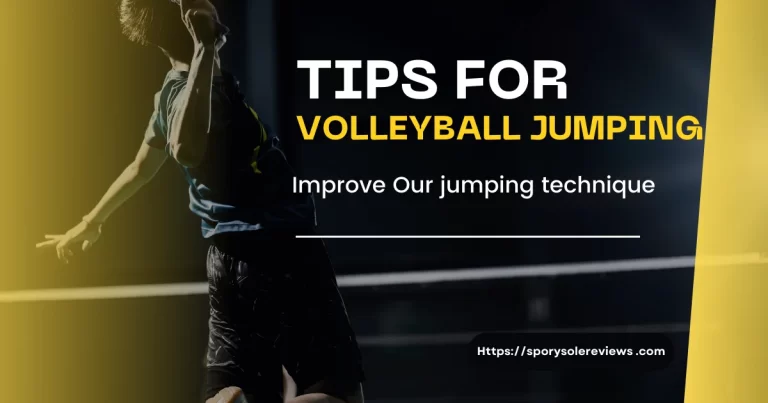What is the Potential of Wearing Tennis Shoes for Volleyball?
Volleyball, a dynamic sport demanding agility and precision, hinges on the feet. Amidst the array of specialized footwear, an intriguing option emerges: The potential of wearing Tennis Shoes for Volleyball. These often-overlooked contenders offer lateral stability, pivot finesse, and an element of surprise.
Differences: Tennis Shoes vs. Volleyball Shoes for Volleyball
| Aspect | Tennis Shoes | Volleyball Shoes |
|---|---|---|
| 1. Sole | Usually flat and designed for various surfaces. | Specifically designed for indoor volleyball courts with gum or non-marking rubber soles for optimal traction. |
| 2. Cushioning | May have cushioning, but it’s not optimized for volleyball movements. | Often features specialized cushioning in key areas to support jumping and quick lateral movements. |
| 3. Support | Generally lacks ankle and arch support tailored for volleyball. | Provides better ankle and arch support to reduce the risk of injuries during gameplay. |
| 4. Weight | May be heavier due to the general-purpose design. | Lightweight to allow for agility and quick movements on the court. |
| 5. Traction | Traction patterns may not be ideal for volleyball movements. | Designed with specific traction patterns to enhance grip on indoor courts. |
Choosing the right footwear is crucial for a comfortable and safe volleyball experience. Volleyball shoes are designed with the sport’s specific requirements in mind, providing better performance and reducing the risk of injuries compared to tennis shoes.
Traction and Outsole Design
The traction and outsole design can be a game-changer. When comparing Designe of Volleyball Shoes vs tennis shoes, one of the first areas where they diverge is in their specialized traction patterns.
Volleyball Shoes: Specialized Traction Patterns
Herringbone vs. Gum Rubber Outsoles
Volleyball shoes are engineered with precision. They often feature herringbone or gum rubber outsoles, meticulously designed to provide exceptional grip on indoor courts. The herringbone pattern, with its zigzagging grooves, offers multidirectional traction, crucial for quick lateral movements and explosive jumps. Gum rubber outsoles, on the other hand, prioritize a strong grip on polished surfaces, ensuring that players can dig, dive, and pivot with confidence.
The Impact on Quick Movements
In volleyball, where every second counts, the right traction can be a game-changer. Specialized patterns and materials in volleyball shoe outsoles contribute to lightning-fast reactions, allowing players to respond to the ball’s trajectory or opponents’ movements with precision. These shoes grant you the control to make rapid directional changes without slipping, a key advantage in the heat of the game.
Tennis Shoes: Versatility in Traction
All-Court vs. Clay-Court Soles
Tennis shoes, designed for versatility across different court types, offer a range of outsole options. All-court soles are engineered to provide decent traction on various surfaces, from hard courts to clay. The tread pattern is less aggressive compared to volleyball shoes, as tennis demands a balance between grip and the ability to slide. Clay-court soles, on the other hand, feature a finer, more compact tread optimized for sliding on clay surfaces.
Adaptability to Volleyball Movements
While tennis shoe outsoles are not tailored for volleyball-specific movements, their adaptability and versatility may still appeal to some players. Depending on your playing style and court conditions, tennis shoes can be a surprising contender on the volleyball court. However, it’s crucial to consider your specific needs and playing surface when making the choice between Tennis Shoes vs. Volleyball Shoes.
Cushioning and Impact Absorption
When exploring the potential of wearing tennis shoes for volleyball, one critical aspect to consider is their cushioning and impact absorption capabilities.
Volleyball Shoes: Targeted Shock Absorption
Midsole Cushioning for Landings
Volleyball shoes are meticulously designed to address the unique demands of the sport. They feature midsoles engineered to provide targeted shock absorption. This means that when you come down from a powerful spike or execute a high jump, the impact on your joints, especially the knees and ankles, is significantly reduced. The midsole cushioning acts as a safeguard, enhancing comfort and minimizing the risk of injury during intense matches.
Protection for Joints
In volleyball, where quick and precise movements are essential, the well-being of your joints is paramount. Volleyball shoes prioritize this aspect. Their cushioning systems are strategically placed to absorb the force generated during landings, safeguarding your joints from excessive strain. This design feature isn’t just about comfort; it’s about sustaining your performance and health throughout your volleyball journey.
Tennis Shoes: Comfort-Oriented Cushioning
Insoles Designed for Comfort
On the other hand, tennis shoes offer cushioning primarily with comfort in mind. While they provide a comfortable experience during long rallies and matches, they may not offer the same level of targeted shock absorption as volleyball shoes. Tennis shoe insoles are often designed to cater to overall comfort, ensuring that players can play comfortably without the added stress on their feet.
Balancing Impact Absorption with Volleyball Needs
The decision between tennis shoes and volleyball shoes involves balancing comfort and the specific requirements of volleyball. When contemplating What is the Potential of Wearing Tennis Shoes for Volleyball?, it’s essential to acknowledge that while tennis shoes excel in comfort, they may not be optimized for the unique impact and movements of volleyball.
Ankle Support and Stability
In Athletic footwear, the aspect of ankle support and stability is paramount, especially when comparing Volleyball Shoes to Tennis Shoes.
Volleyball Shoes: Ankle Collars and Support
Injury Prevention during Lateral Movements
Volleyball shoes are engineered with a keen focus on injury prevention. They often feature extended ankle collars, which provide crucial support during lateral movements. Volleyball demands quick shifts in direction, and the risk of rolling or spraining an ankle is ever-present. The ankle collars in volleyball shoes act as a shield, reducing the vulnerability of the ankles to injuries, and enabling players to move confidently across the court.
Enhanced Performance Confidence
With the assurance of ankle support, players can push their limits with enhanced confidence. Whether it’s a powerful jump, a quick lateral maneuver, or a dive to save a point, the stability offered by volleyball shoes empowers athletes to perform at their peak, knowing their ankles are protected.
Tennis Shoes: Lower Collars and Versatility
The Balance Between Ankle Freedom and Support
In contrast, tennis shoes typically feature lower ankle collars, prioritizing freedom of movement. Tennis requires a different set of movements, with players frequently changing direction and needing ankle flexibility for effective play. While tennis shoes provide some ankle support, it strikes a balance between support and agility. This balance allows for swift transitions and quick adjustments on the tennis court.
Supplementary Options for Ankle Stability
For those players who prefer the versatility of tennis shoes but still seek ankle stability, supplementary options come into play. Ankle braces and supports can be worn with tennis shoes, providing an extra layer of protection and support tailored to individual needs.
Potential of wearing Tennis Shoes for Volleyball – Pros and Cons
| Pros | Cons | |
|---|---|---|
| Volleyball Shoes |
|
|
| Tennis Shoes |
|
Conclusion: Finding the Perfect Fit
In the end, the choice between Tennis Shoes and Volleyball Shoes boils down to your unique needs and preferences on the court. Consider What is the Potential of Wearing Tennis Shoes for Volleyball? Your playing style, budget, and performance expectations all play a part. It’s about finding the ideal footwear that enhances your game and keeps you at the top of your match, every spike, and every serve.
Can I Use Tennis Shoes for Volleyball?
While tennis shoes offer versatility, they may lack the specialized features of volleyball shoes, such as targeted cushioning and traction. Some players opt for tennis shoes, but it depends on your playing style and preferences.
What Makes Volleyball Shoes Different from Tennis Shoes?
Volleyball shoes are designed for quick lateral movements, with features like ankle support and specific outsole patterns. Tennis shoes, on the other hand, prioritize agility and versatility.
Are Volleyball Shoes Worth the Higher Cost?
Volleyball shoes can be pricier due to their specialized design. They are worth the investment if you’re serious about volleyball and want the best performance and injury prevention.
Can I Use Tennis Shoes for Both Tennis and Volleyball?
Yes, tennis shoes can be used for multiple court sports, including volleyball. They offer versatility, making them a cost-effective option for athletes who play different games.
How Do I Decide Between Tennis and Volleyball Shoes?
Consider your playing style, court surface, budget, and whether you prioritize performance enhancement or versatility. Evaluate What is the Potential of Wearing Tennis Shoes for Volleyball? to make an informed decision.

